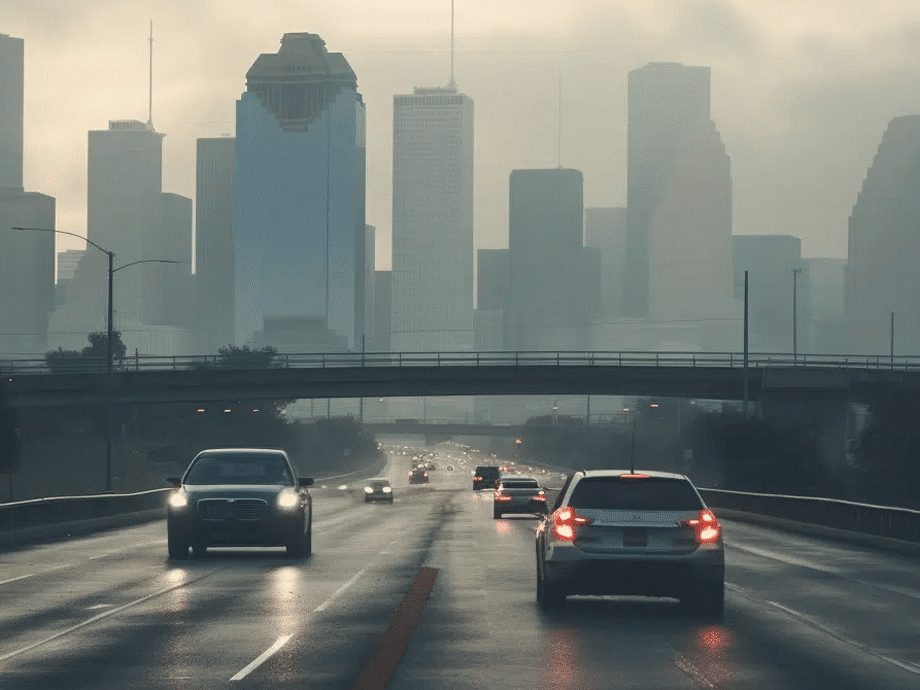Key Takeaways
- Uber drivers in Texas are legally required to maintain state-mandated insurance, including periods when the app is on and the driver is logged in without passengers (“Available”), and after accepting a trip while en route to pick up the passenger(s) and while on the trip (“Engaged”).
- In addition to Uber’s insurance policy, personal auto insurance is vital for Uber drivers in Texas to cover incidents when not providing rideshare services, with tailored options like car repair and medical benefits available from insurers.
- Texas Uber drivers must consider the financial implications of their insurance, including the cost variance from standard policies and employing financial strategies to manage expenses, like taking advantage of provider discounts and minimum coverage strategies.
Let's Go Beyond, to Bring You Back
Let's get you the compensation you're entitled to. Get a FREE Consultation today.
Let's Go Beyond, to Bring You Back
You deserve the compensation you’re entitled to, call for your FREE Case Review today.
Navigating the Insurance Landscape for Uber Drivers in Texas
In Texas, Uber drivers must maintain specific insurance coverage to operate legally. It includes both coverage offered by Uber’s insurance provider and their own personal auto insurance. These requirements are grounded in state law and Uber’s policy terms, aimed at protecting both drivers and riders.
You may wonder how this insurance landscape operates for an Uber driver. Allow me to explain.
The Crucial Periods: Coverage While on the Job
The insurance coverage for Uber drivers fluctuates based on the phase of their employment. The first period, when the driver is available, applies when the driver has the ridesharing app turned on, but is between rides. During this time, Uber provides contingent liability coverage, which is dependent on your personal insurance. This coverage safeguards you if an accident occurs while waiting for a rideshare request.
Once a ride request is accepted, it triggers the start of the next period being “engaged.” This covers the time the driver is en route to picking up the passenger until reaching the passenger’s final destination. During this time, Uber’s insurance policy comes into effect, complementing your personal insurance. This policy offers significant coverage, including property damage and injuries to riders or others caused by the Uber driver.
Meeting Texas Standards: State-Mandated Insurance Coverage

Furthermore, the Texas law obligates rideshare companies like Uber to maintain higher insurance coverage that extends to people or property that might be hurt by the driver’s actions causing a collision while operating for the rideshare company. This ensures that victims of such incidents have a safety net, and drivers are not burdened with hefty out-of-pocket expenses. While available for rides, an Uber driver is required to have “$50/$100/$25” coverage. That means, up to $50,000 coverage for bodily injury to any one person involved in an accident, up to a total of $100,000 for bodily injury for everyone injured in the crash, and up to $25,000 for property damage caused by the crash. And when engaged? Texas law requires the Uber insurance limits be $1,000,000 total for all injuries or property damage while actually involved in a prearranged ride.
Complementing with Personal Auto Insurance
Besides Uber’s coverage, personal auto insurance significantly contributes to the protection of Uber drivers in Texas. Rideshare driver’s own personal auto insurance is crucial for times when they are not actively working for Uber. It provides additional protection in the event of an accident, supplementing the coverage provided by Uber.
Uber’s insurer, for instance, offers additional protection for Uber drivers. Their coverage, tailored to the unique needs of rideshare drivers, includes:
- Car repair coverage during personal trips
- Optional injury protection with medical benefits
- Customized coverage options to address the specific requirements of rideshare driving when not actively using the Uber platform.
Injured in an Uber?
Get Compensated For Your Injuries & Damages! Call Us For A FREE Case Review And Know What Your Case Is Worth.
Insurance Coverage Types and Limits for Uber Drivers
For Uber drivers, it’s important to comprehend the types and limits of insurance coverage. Coverage types vary based on your status as a driver and the specific period of your work. The limits, on the other hand, outline the maximum amount that an insurance company will pay for a covered accident.
Let’s examine the specific details of these coverages and their limits for Uber drivers operating in Texas.
Limited Liability Coverage: Between Rides
When a driver is between rides but logged into the app and available to accept rides, Uber provides some liability insurance to help protect its drivers from the financial cost of injuring someone with their vehicle while waiting for a ride.
Extensive Liability Coverage + Contingent Coverage: During Passenger Transport
During passenger transport, Uber drivers who are part of the transportation network company’s ordinary ride sharing program, are covered by Uber’s insurance policy. It offers comprehensive protection, with third-party liability coverage with limits of up to $1 million. Additionally, Uber offers contingent coverage for damage to the driver’s own vehicle. This coverage is reliant on personal insurance and involves a deductible. In other words, it is the coverage that kicks in if the driver’s personal auto insurance coverage doesn’t apply or is not sufficient. For Uber drivers in Texas, contingent coverage provides insurance for car repair costs up to the actual cash value, with a $2,500 deductible.
Bear in mind, this optional coverage is subject to certain conditions. It only applies if the driver maintains an actual insurance policy with a personal auto insurance carrier that surpasses the state’s minimum requirements. Thus, while it provides a significant safety net, a driver must ensure their personal auto insurance is in order to fully benefit from this coverage.
Financial Implications of Rideshare Insurance
Though insurance coverage acts as a safety net for Uber drivers, comprehending the financial implications of these coverages is equally important. From understanding the cost of rideshare insurance to devising effective cost management strategies, let’s explore the financial aspects of rideshare insurance for Uber drivers in Texas.
Cost Comparison: Rideshare Insurance vs. Standard Policies
The cost of rideshare insurance can vary significantly from standard auto insurance. The cost of rideshare insurance in Texas can vary widely, with minimum limits, liability only policies as low as $50–$100 per month, to over $500 a month for full coverage. However, the exact cost is subject to several factors such as:
- the driver’s age
- driving history
- location
- the selected coverage limits
- the covered vehicle
Incorporating a rideshare endorsement into your standard car insurance policy will likely result in an increase of premium in line with the amounts above.
Given these costs, it’s clear that driving for Uber involves additional insurance expenses. However, not having rideshare insurance can result in even more significant financial repercussions, such as claim rejection or policy cancellation by the driver’s insurer if they discover that driver is driving for Uber without the insurer’s knowledge.
Smart Financial Strategies for Drivers
Being an Uber driver in Texas can be financially rewarding, but it’s essential to take strategic steps to manage insurance costs effectively. Various insurance providers offer discounts that can help drivers reduce their premiums. For example, many large insurance companies offer rideshare insurance policies with discounted features tailored to the requirements of ridesharing drivers.
Moreover, drivers can reduce their premiums by:
- Maintaining the minimum required liability insurance coverage of $30,000 per person and $60,000 per accident
- Adhering to the state’s minimum requirements and thoughtfully assessing additional coverage options
- Opting for budget-friendly rideshare insurance options
By following these strategies, drivers can prevent excessive payments for insurance.
Requirements to Become an Insured Uber Driver in Texas
To become an insured Uber driver in Texas, certain requirements need to be met. Let’s delve into these requirements, which range from background checks to vehicle standards and insurance coverage, in detail.
Background Checks and Vehicle Standards

- Undergo an online screening process that evaluates their driving record and criminal history
- Possess a minimum of one year of licensed driving experience (or three years if under age 25)
- Possess a driver’s license, proof of insurance, and a profile photograph
Vehicle standards are another crucial requirement for Uber drivers in Texas. To become an Uber driver, your vehicle must meet the following criteria:
- It must be 16 years old or newer
- It must have four doors
- It must be in good condition with no cosmetic damage
- It must have no commercial branding
Specific vehicle types like UberX and UberXL also have additional seating requirements. Compliance with these vehicle standards is a prerequisite to becoming an Uber driver in Texas.
Maintaining Compliance with Uber’s Policy Terms
Once a driver starts driving for Uber, maintaining compliance with Uber’s insurance policy terms is essential. These terms include maintaining $50,000 per person and $100,000 per accident for injuries, and $25,000 in property damage per accident. Complying with these terms not only ensures eligibility for coverage under Uber’s insurance in the event of an accident, but it also protects the driver from potential repercussions such as policy cancellation.
Uber drivers receive notifications regarding alterations in the insurance policy terms through the Driver app. Following the submission of a claim, a notification will be displayed on the Driver app homepage guiding them to the Crash Center, which offers details on insurance-related issues. Staying updated with these changes and ensuring adherence to these terms is crucial for remaining an insured Uber driver.
Injured in an Uber?
Get Compensated For Your Injuries & Damages! Call Us For A FREE Case Review And Know What Your Case Is Worth.
How to Handle Insurance After an Uber Accident
Despite our best attempts to prevent them, accidents are regrettable occurrences that can still happen. If an accident involves you as an Uber driver, how should you address insurance matters? Let’s go through the process step by step.
Reporting the Incident
If you’re involved in an accident while driving for Uber, the first step is to ensure everyone’s safety and call the police. Once the immediate situation is under control, it’s essential to report the incident to Uber. You can do this through the Help section of the Driver app by choosing Trip Issues and Adjustments, and then selecting ‘I was in a crash’.
Reporting the incident to your insurance provider is the next crucial step. Provide them with all the essential details regarding the accident, including:
- The accident’s location, date, and time
- Names, addresses, phone numbers, and insurance policy numbers of all involved parties
- Weather conditions
- Photographs of the damaged vehicles
It’s important to remember that the typical timeframe for filing a lawsuit after a claim is two years in Texas.
Filing a Claim with the Insurance Provider
Following the incident report, the next course of action is filing a claim with the insurance provider. Reach out to Uber’s claims support team for assistance with the claims process and crash reporting, or alternatively, utilize the online claims form accessible within the Uber app.
When submitting the claim, it’s crucial to have all the necessary documents at hand. This includes photographs of the accident site, depicting the damage to the vehicles and any resulting injuries, and the insurance card and driver’s license details of all individuals involved. Keep in mind the timeframe for submitting a claim. In Texas, the statute of limitations for car accident claims related to injuries is two years from the date of the accident.
Frequently Asked Questions
Do you need rideshare insurance for Uber in Texas?
Yes, as an Uber driver in Texas, it is important to have rideshare insurance for additional protection when using the Uber app and driving to pick up passengers. This coverage goes beyond personal auto insurance and provides commercial liability protection.
What do you need to be an Uber driver in Texas?
To be an Uber driver in Texas, you need a valid driver’s license issued by the Texas Department of Public Safety, personal auto insurance, and to be at least 21 years old. Additionally, you must have at least a year of driving experience (or more, if you are under 25 years old) with a license and pass a background screening. You need proof of residency and insurance, and must submit a profile photo to Uber.
Does Uber ask for proof of insurance?
Yes, Uber requires drivers to provide proof of their insurance coverage, but they will not contact the insurance company directly. Providing proof of insurance is enough to satisfy Uber’s requirements.
How long does Uber take to confirm insurance?
Uber usually takes a few hours to a few days to confirm insurance documents, which is essential for ensuring the safety of drivers and passengers. Factors such as document accuracy and submission volume can affect the timeframe.
How does Uber verify insurance?
Uber and Lyft typically do not contact your insurance company directly to verify individual drivers. Instead, drivers must provide proof that they meet the minimum insurance coverage requirements.


